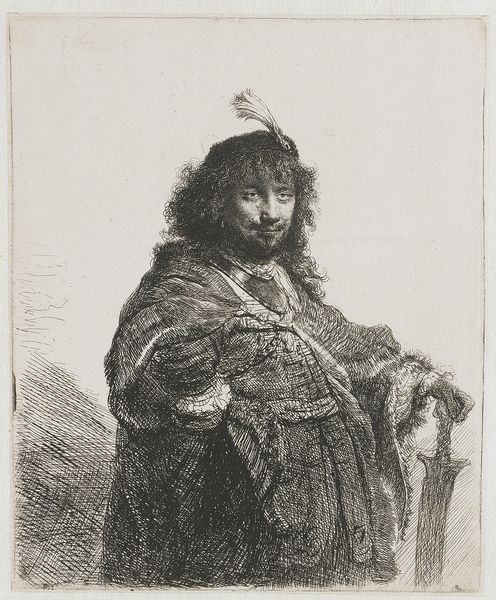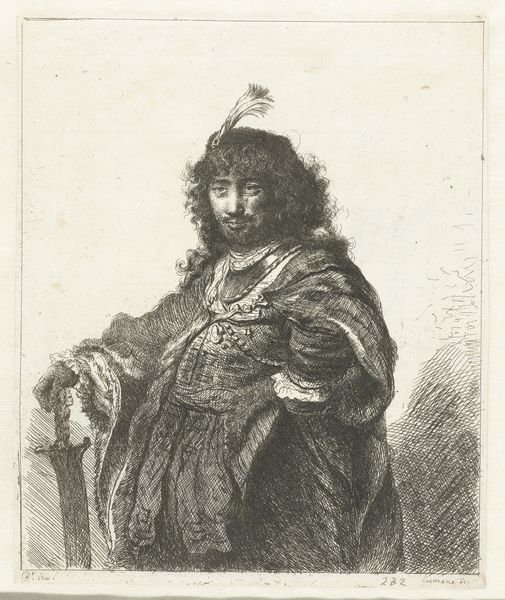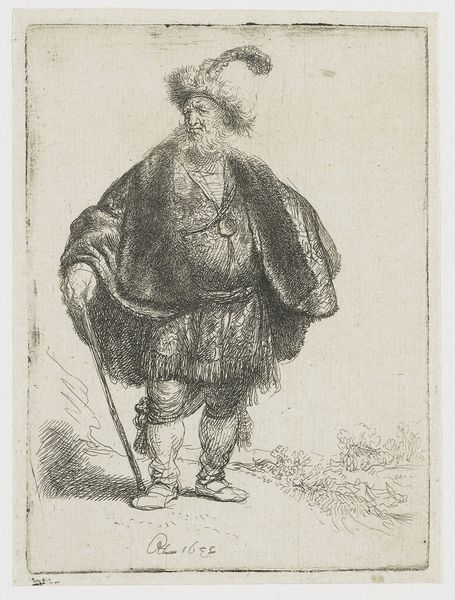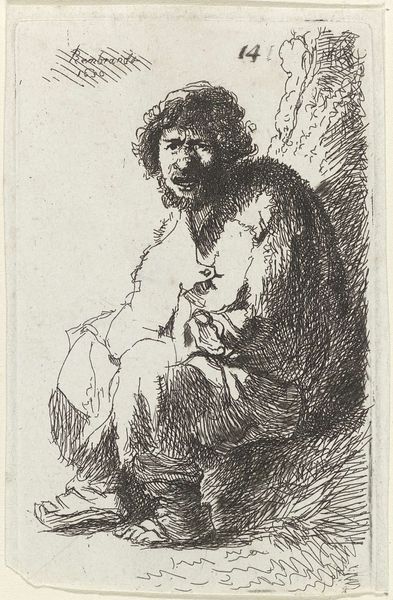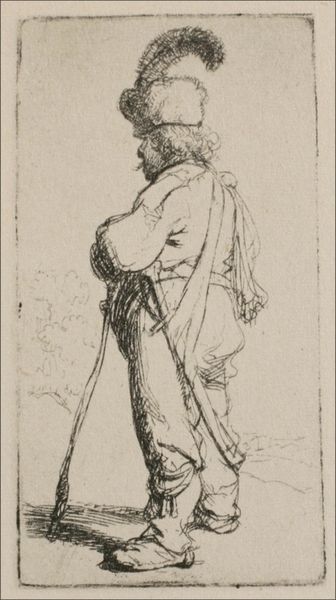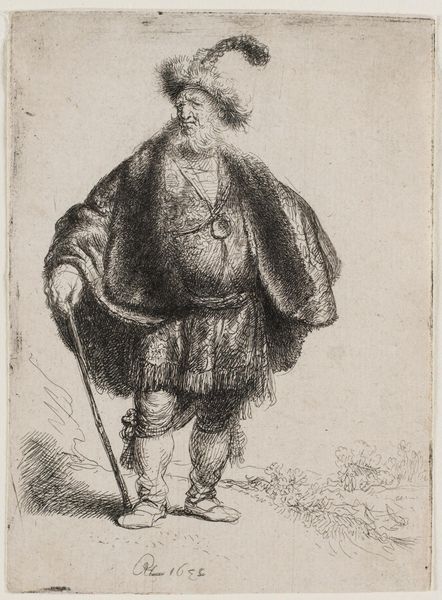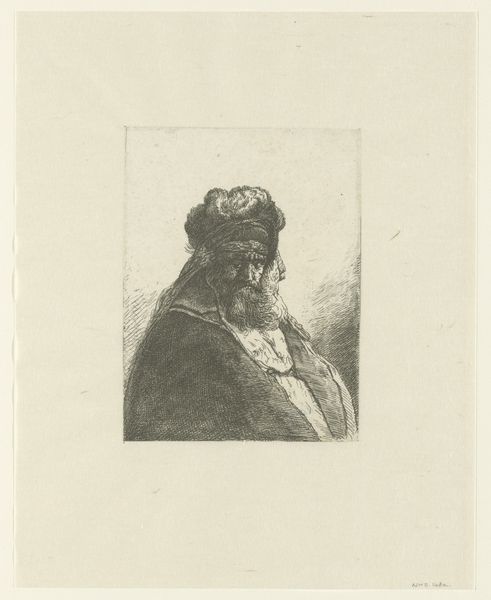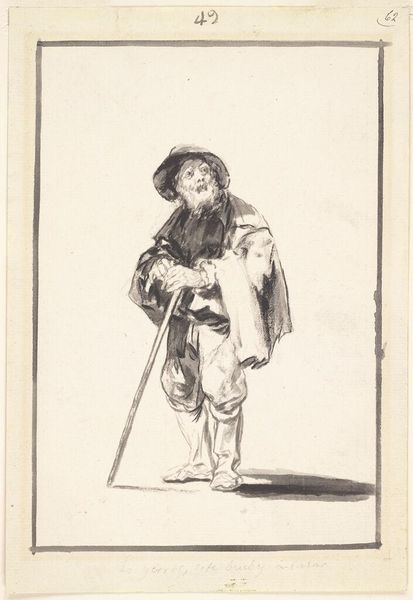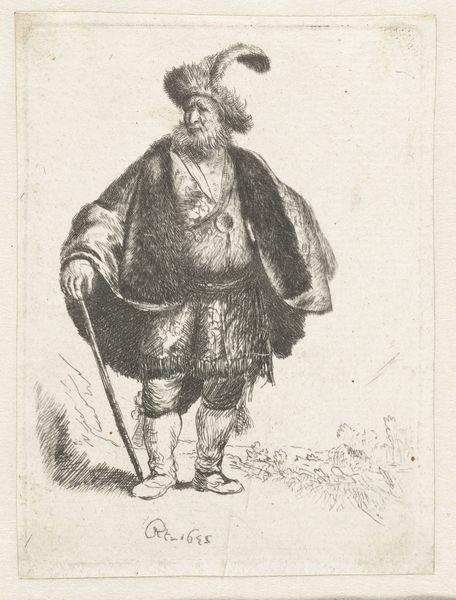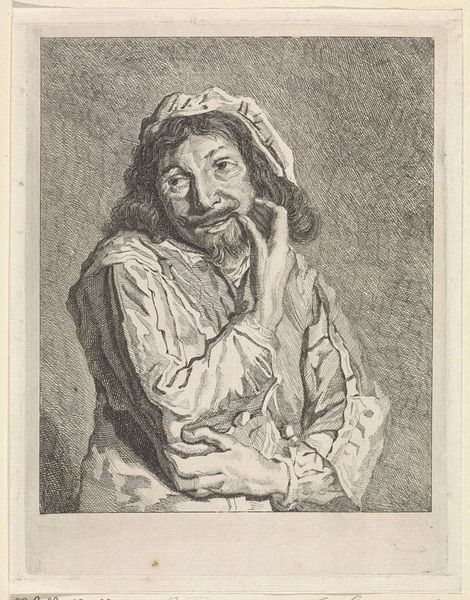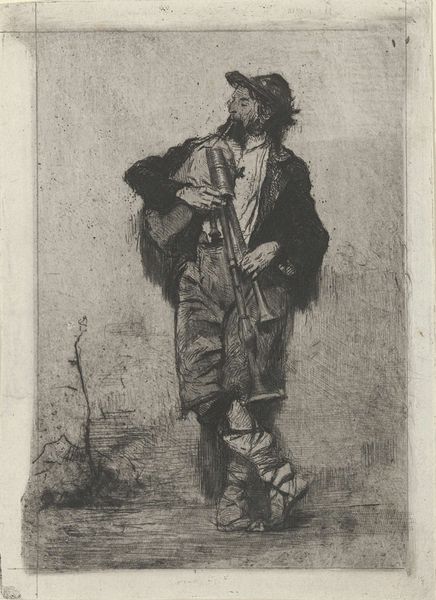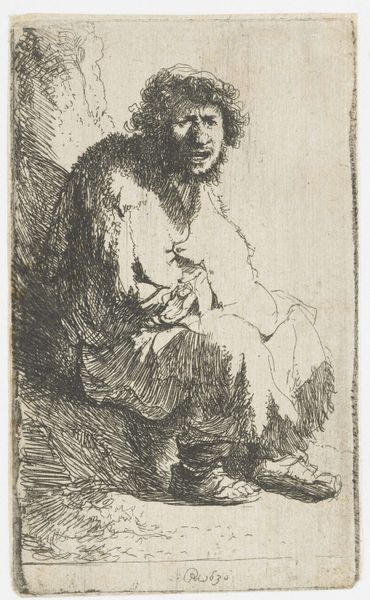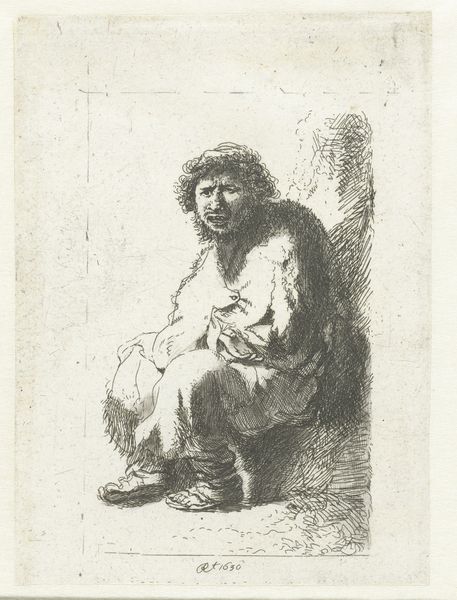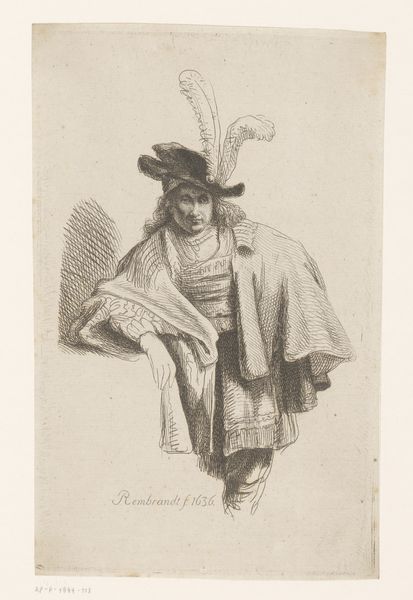
print, etching
#
portrait
#
baroque
# print
#
etching
#
history-painting
Dimensions: height 188 mm, width 155 mm
Copyright: Rijks Museum: Open Domain
Curator: Let's turn our attention to this etching here at the Rijksmuseum: "Self-portrait (?) with plumed cap and lowered sabre," dating from after 1634. The identity of the artist is currently anonymous. Editor: It’s strikingly ambiguous, almost confrontational. The sitter seems to look directly out, with that lowered sabre implying a challenge, though softened by the luxurious textures of the fur and feather. There's a sense of obscured identity. Curator: Absolutely, and this ambiguity resonates deeply when considering the socio-political context of self-portraiture during the Baroque era. Etchings, like this one, allowed for broader circulation and, therefore, greater possibilities for self-representation beyond elite circles. The plumed cap itself speaks to a certain performative element, perhaps signaling military aspiration or aristocratic pretension. Editor: I find that performativity so intriguing here, particularly considering the questions of authorship. This ‘anonymous’ tag creates a really fertile ground for discussion on how we interpret identity, intention, and the power dynamics inherent in representation itself. Is the lowering of the saber a submission? Is it really “lowering” as this could be the end of an action. And by using clothing items from the time, are they not playing to stereotypes of power, gender, and war? Curator: Exactly. The choice to represent oneself in this way, regardless of the actual social standing, creates a very specific type of public persona. By leaning into what they see as aristocratic signifiers like war, weapons, and extravagance they’re trying to buy into the role, the social signifiers surrounding history, or nobility? What statement might this history-painting make? Editor: The circulation through print also allows an assertion of that imagined identity and for the proliferation of it to enter common and academic history. It is definitely open for interpretation, from power to shame. I really feel it. Curator: Ultimately, the “Self-Portrait (?)” prompts us to reflect critically on the relationships between art, identity, and societal narratives in this moment. I'll think about that history for days to come. Editor: And on who has historically been excluded from those narratives, making art like this one a reminder of the complex negotiations individuals engage in while seeking self-definition and potentially acceptance.
Comments
No comments
Be the first to comment and join the conversation on the ultimate creative platform.
